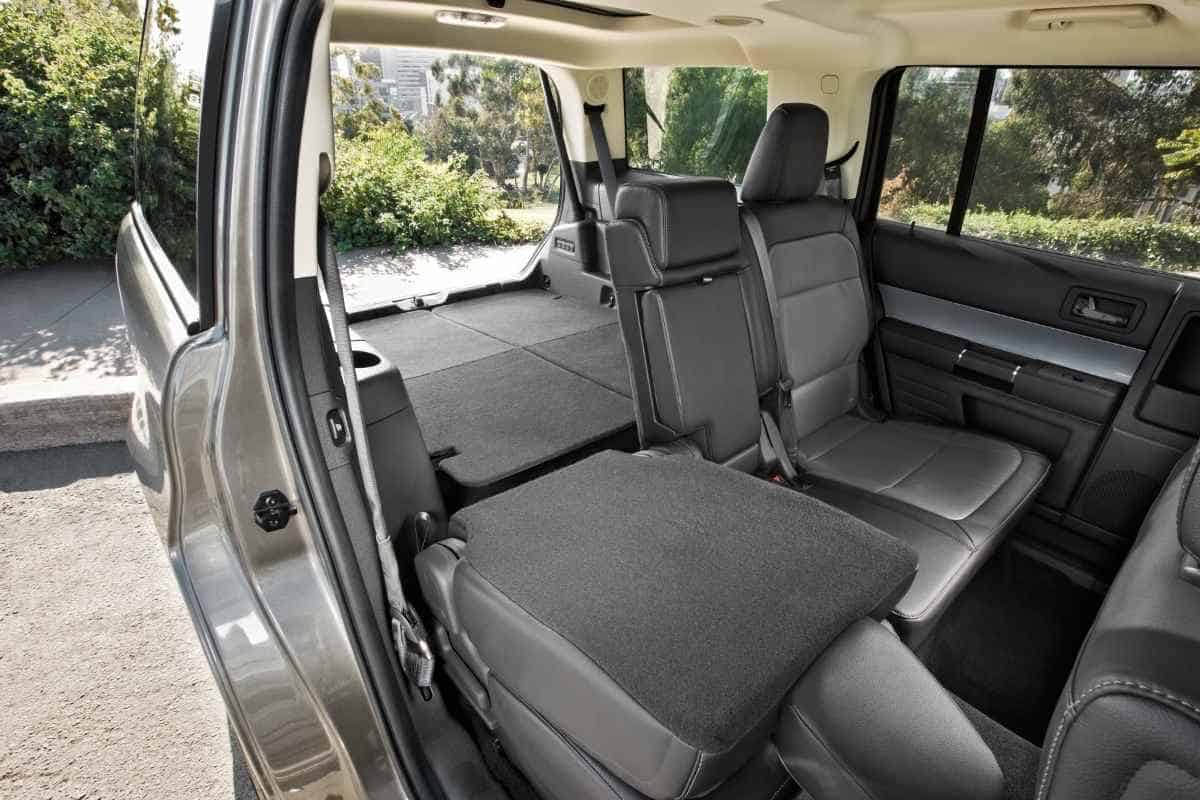What Are the Best Years for the Ford Flex?
For 11 years, Ford made the Ford Flex. This boxy midsize SUV could seat 6-7 people and was a crowd-pleaser. But what are the best years for the Ford Flex?

2019 is the best year for the Ford Flex because of its high-reliability rating and high gas mileage. 2013-2019 are the best years overall for the Ford Flex, although the 2013-2018 models of the Ford Flex have a lower reliability rating than the 2019 model. The Ford Flex has AWD and FWD.
Now that you know that 2019 is the best year for the Ford Flex, you are likely wondering what features the 2019-2013 Ford Flex models have. Keep reading to find out.
What Are The Best Years for the Ford Flex?
Although the 2019 Ford Flex is the best model because of its high-reliability rating and high gas mileage, each Ford Flex model until 2013 is great and has many features that are important to know about before you decide to purchase the Ford Flex.
2019 Ford Flex
- 4 out of 5 stars J.D. Power reliability rating
- 2,000 lbs towing capacity
- 16 mpg city/23 mpg highway
- 20 cubic feet of cargo space, up to 83.2 cubic feet when 2nd and 3rd row are folded down.
- Rearview camera
- Rear parking sensors
- Cloth seats
- 4.2 inch display
- Bluetooth
- USB charging port
- 6 speaker sound system
2018 Ford Flex
- 3 out of 5 stars J.D. Power reliability rating
- 16 mpg city / 23 mpg highway
- 2,000 lbs towing capacity
- Spacious seats
- Easy to maneuver
- NHTSA 4 out of 5 star safety rating
- Rearview camera
- Rear parking sensors
- 20 cubic feet of cargo space, 83.2 cubic feet of cargo space when back two rows are folded down.
2017 Ford Flex
- 3 out of 5 stars J.D. Power reliability rating
- 16 mpg city / 23 mpg highway
- 2,000 lbs towing capacity
- NHTSA overall safety rating of 4 out of 5 stars
- 20 cubic feet of cargo space, up to 83.2 cubic feet of cargo space when all seats are folded down.
2016 Ford Flex
- 3 out of 5 stars J.D. Power reliability rating
- 16 mpg city / 23 mpg highway
- 2,000 lbs towing capacity
- NHTSA overall safety rating of 4 out of 5 stars
- 20 cubic feet of cargo space, up to 83.2 cubic feet of cargo space when all seats are folded down.
- 4.2 inch screen
- Bluetooth
- CD Player
- Radio
2015 Ford Flex
- 3 out of 5 stars J.D. Power reliability rating
- 18 mpg city / 25 mpg highway
- 2,000 lbs towing capacity
- NHTSA overall safety rating of 4 out of 5 stars
- 20 cubic feet of cargo space, up to 83.2 cubic feet of cargo space when all seats are folded down.
- 6-speaker audio system
- Bluetooth
- USB charging port
2014 Ford Flex
- 3 out of 5 stars J.D. Power reliability rating
- 18 mpg city / 25 mpg highway
- 2,000 lbs towing capacity
- NHTSA overall safety rating of 4 out of 5 stars
- Rear parking sensors
- 20 cubic feet of cargo space, up to 83.2 cubic feet of cargo space when all seats are folded down.
- Bluetooth
2013 Ford Flex
- 3 out of 5 stars J.D. Power reliability rating
- 18 mpg city / 25 mpg highway
- 2,000 lbs towing capacity
- Rear parking sensors
- 20 cubic feet of cargo space, up to 83.2 cubic feet of cargo space when all seats are folded down.
- Bluetooth
- Charging USB port
What Ford Flex Years to Avoid
Avoid purchasing a Ford Flex that was made in 2011 and before. These Ford Flex models have a low-reliability rating, even though they get up to 18 miles per gallon in the city and 25 miles per gallon on the highway.
2011-2010 Ford Flexes have a 2-star J.D. Power reliability rating, which is not a good score. The 2009 Ford Flex has a 3-star J.D. Power reliability rating, but it lacks many features that most cars made in 2009 come with. (Source)

History of the Ford Flex
The Ford Flex was officially released in 2009, but it was discontinued in 2019. This boxy midsize SUV was easy to drive and had roomy seats, even in the third row. It even got between 16-18 miles per gallon in the city and 23-25 miles per gallon in the city, which is much higher than most other SUVs of a similar size.
However, the high amount of gas mileage and interesting shape did not make up for the lack of available cargo space in the Ford Flex, and not many units were sold. Only about 300,000 Ford Flex units were sold in 11 years, which is a disappointing number of sales, especially when Ford makes other midsize SUV models that sell many more vehicles per year. (Source)
The Ford Flex was available in three different trim models: the SE, SEL, and the Limited. Each Ford Flex could seat between 6-7 people, and the seats kept all of the passengers comfortable, even during long car rides. (Source)
One of the reasons why the Ford Flex was not a success for Ford is because of the lack of technology and safety features that came standard in each vehicle. The standard screen is only 4.2 inches, while other similar midsize SUVs had standard screens that are touchscreen and much larger.
The Ford Flex has many safety features available and has a high overall NHTSA safety rating, but typically only came with two standard safety features: a rearview camera and rear parking sensors. That wasn’t enough for most customers, so they decided not to purchase a Ford Flex, which lead to it being discontinued.
Another reason why most people chose not to purchase the Ford Flex is because of the relatively low-reliability rating. Most models of the Ford Flex only had a J.D. Power reliability rating of 3 out of 5 stars, which is below average. People want the most reliable car available, and the Ford Flex didn’t have the needed ratings.
If you still want to purchase a Ford Flex, you can purchase one from a used car dealership or online. However, you will have to purchase a used model because it is no longer being manufactured.
